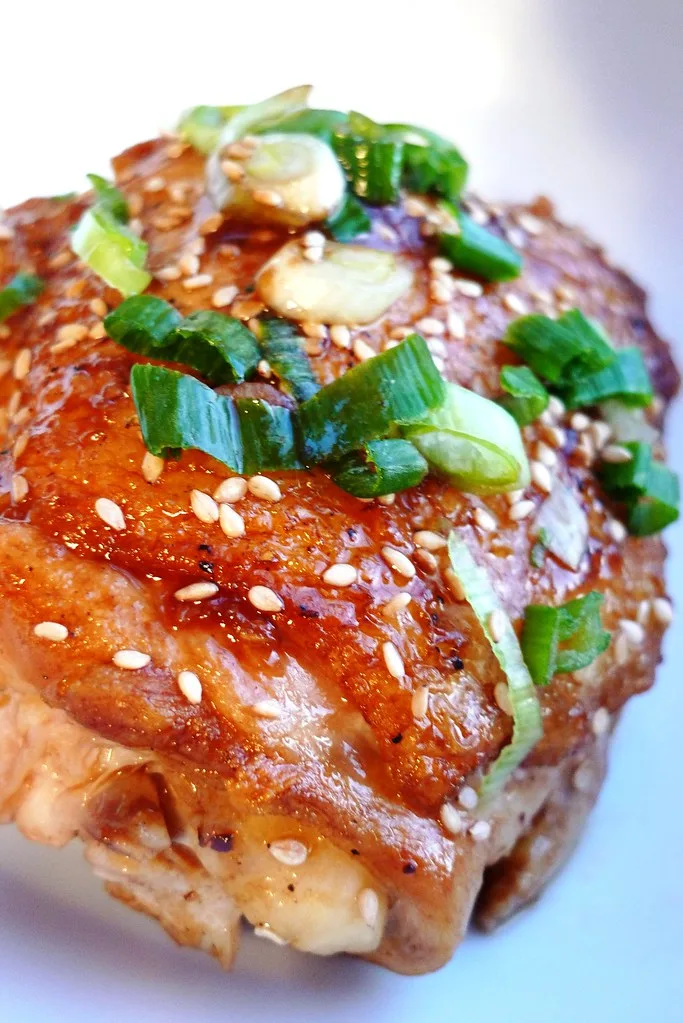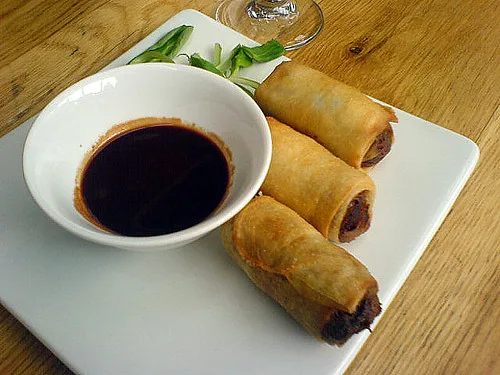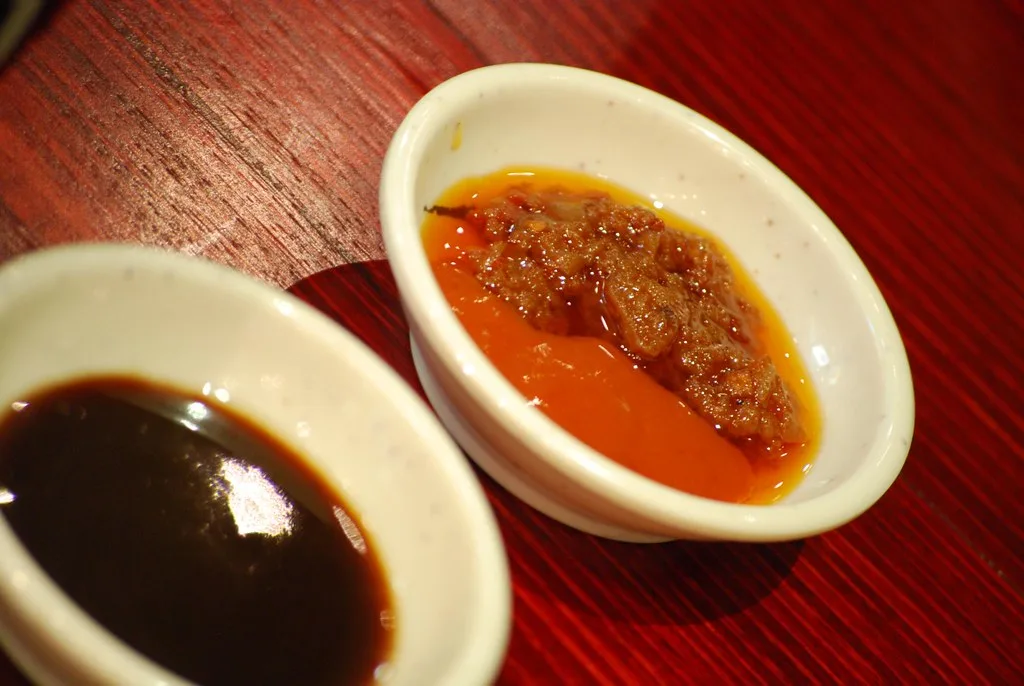In a Nutshell:
- Shelf life: 2+ years unopened, 6-12 months opened or at least until the printed date
- Spoilage signs: off smell, mold, or altered taste and texture
- Storage methods: cool, dark place; refrigerator after opening
Hoisin sauce is a deliciously sweet, tangy, and spicy dipping sauce that’s popular in Chinese cuisine.
But have you ever wondered how long hoisin sauce lasts or if it can go bad? Well, that’s exactly what we’re diving into today.
In this article, we’ll explore the shelf life of hoisin sauce, how to spot spoilage, and the best ways to store it to keep it fresh and tasty for as long as possible. So, if you’re ready to become a hoisin sauce expert, let’s get saucy!

How Long Does Hoisin Sauce Last?
A bottle of hoisin sauce typically comes with a shelf life of 18 to 24 months and easily lasts for months beyond the best-by date. After opening, it can retain quality for anywhere between 6 and 12 months if you refrigerate it.
Of course, these are just rough estimates, as the actual longevity depends on a few factors.
Now, let’s dive deeper into the nitty-gritty details of hoisin sauce’s shelf life.
Unopened Bottle
Hoisin sauce comes with a best-by date that’s usually between 18 and 24 months of the production date. And as long as the seal stays untouched, there’s no reason it should stay flavorful for at least a few extra months.
So, how long past the “expiration” date is hoisin sauce still okay to use? Does hoisin sauce go bad?
An unopened bottle of hoisin sauce will go bad eventually, but there’s no way of telling when that will happen. If the bottle or jar is untouched, the sauce should be safe to use for months, if not years, beyond its date.
So if you’ve got a jar of expired hoisin sauce on hand, my best advice is to open it up and check against spoilage signs that I cover later in the article. Chances are it’ll still be okay to use in your stir fry and for dipping.
Of course, if your unopened jar is like five years past its date, it’s probably better to err on the side of caution and toss it. Hoisin has a long shelf life, but it’s not soy sauce that lasts years without any change in quality.
After Opening
An open jar of hoisin sauce should retain good quality until the printed date or for 6 to 12 months of opening if you keep it tightly sealed and in the fridge.
Once you’ve opened the jar, the quality of the sauce starts to degrade gradually, so your freshly open hoisin sauce will likely taste slightly better than one that’s been opened and refrigerated for the last nine months.
In other words, to enjoy the best sauce quality, you should use it as soon as possible.
(Some brands go as far as recommending using the sauce within a month of opening the bottle.)
Similar rules apply to other popular sauces and condiments such as fish sauce, Teriyaki sauce, mayonnaise, or ketchup.
What Affects Hoisin Sauce Shelf Life?
Several factors influence the storage time of hoisin sauce. Let’s take a closer look at some of these elements.
Storage Conditions
Proper storage is crucial in extending the shelf life of hoisin sauce. Keeping it in a cool, dark place like a pantry or cupboard helps maintain its quality. Once opened, refrigerated hoisin sauce will have a longer shelf life compared to leaving it at room temperature.
Ingredients
The ingredients in hoisin sauce play a role in its shelf life. While the sauce is typically based on fermented soybeans, other spices and preservatives vary between brands.
As a result, certain brands of hoisin sauce may maintain their quality for longer, while others might decline in flavor more rapidly.
With all this newfound knowledge on hoisin sauce’s shelf life, you’re ready to move on to the next saucy topic: spotting spoilage signs. Let’s learn how to tell when it’s time to toss that hoisin sauce!

How to Tell if Hoisin Sauce is Bad?
To determine if your hoisin sauce has gone bad, look for signs like mold growth, a sour smell, or changes in texture and taste.
Let’s dive deeper into each of these indicators to help you make the right call on your hoisin sauce’s freshness.
Mold Growth
The most obvious sign that your hoisin sauce is past its prime is mold growth. If you see mold appears on the surface or inside the open jar, it’s time to toss it.
Like with tomato paste, barbecue sauce, or salad dressing (or almost any other food product out there), mold is a clear sign that the sauce is no longer safe to consume.
Sour Smell
If your hoisin sauce smells sour or off, it’s another indication that it has spoiled. Trust your nose in this situation, as you would with Worcestershire sauce, vinegar, or hot sauce.
Changes in Texture and Taste
Finally, if your hoisin sauce has an altered texture or taste, it might be time to part ways. Though it might not be harmful, the sauce won’t provide the same delicious flavor you’re expecting.
This can be similar to when Dijon mustard or horseradish loses its zing. The condiment isn’t necessarily bad but doesn’t do its part anymore.
Now that we’ve covered the telltale signs of spoiled hoisin sauce, let’s look at some changes that might be concerning but are actually okay.

When Changes in Hoisin Sauce are Harmless
Sometimes, hoisin sauce might undergo transformations that can be mistaken for spoilage, but they’re really nothing to worry about.
Separation
It’s not uncommon for hoisin sauce and other condiments like gochujang or chimichurri sauce to separate over time. This can happen when the heavier particles settle at the bottom of the jar.
That’s why most bottles ask you to shake the sauce well before using it. Do so, and it should be as good as new.
Darkening
Hoisin sauce can darken over time due to exposure to air or changes in temperature. While it may look different, the flavor is typically unaffected, and it’s still safe to consume.
That’s it for the typical changes. If you notice anything concerning, follow the old adage: when in doubt, throw it out.
Does Hoisin Sauce Need to be Refrigerated?
Once opened, it’s best to refrigerate your hoisin sauce to ensure it stays fresh for an extended period. Refrigeration helps prevent bacterial growth and slows down the deterioration process, and that’s what most brands recommend.
This practice aligns with the storage suggestions for other opened condiments like oyster sauce.
You could probably get away with storing hoisin sauce at room temperature for a few weeks, but its quality would likely be much worse than if you refrigerated it.
With that said, let’s move on to the best practices for storing hoisin sauce to ensure it lasts as long as possible.

How to Store Hoisin Sauce
To keep your hoisin sauce at peak quality, make sure it’s stored properly. To do so, follow these storage guidelines:
Protect from Heat and Light
Store hoisin sauce away from direct heat and light sources, just like you would with rice vinegar, molasses, or apple cider vinegar. Exposure to heat and light can degrade the quality and flavor of the sauce.
Cool and Dry Place
A cool and dry place like a pantry or cupboard is ideal for storing unopened hoisin sauce. This ensures it’s protected from temperature fluctuations and humidity, which could negatively affect its quality.
Sealed Container
When storing opened hoisin sauce, make sure it’s in a sealed container. This helps prevent cross-contamination and exposure to air, which could cause the sauce to spoil faster.
Refrigerate After Opening
Once you open the jar or bottle, refrigerate any leftovers of this popular sauce.
By following these storage guidelines, you’ll ensure your hoisin sauce is properly stored, maintaining its delicious flavor for as long as possible.
